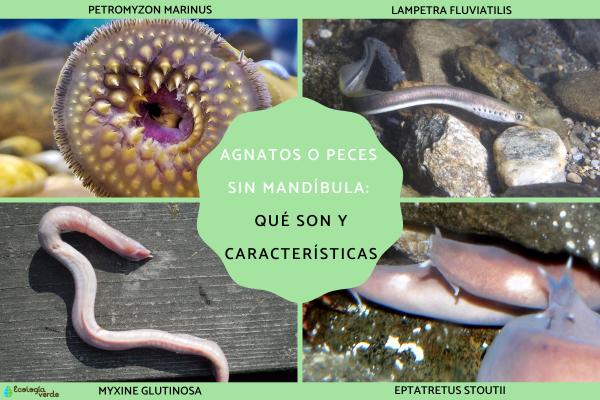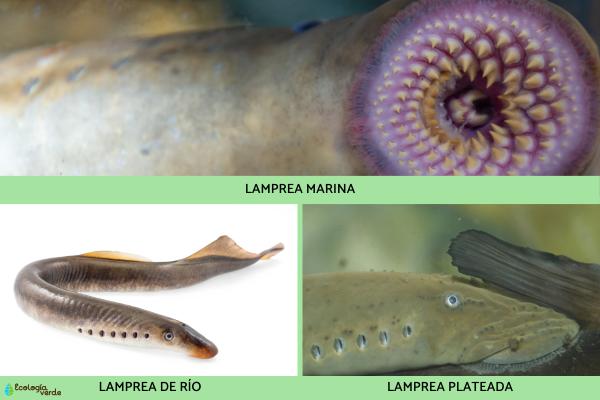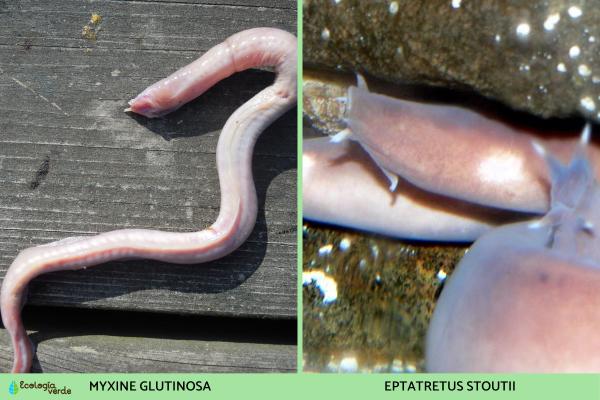Jawless fish (Agnatha) are a fascinating and ancient group of vertebrates whose unique biology and evolutionary importance make them a highlight for both scientists and nature enthusiasts. Although most jawless fish have gone extinct, a few survivors remain today—lampreys and hagfish—serving as living witnesses to the early history of vertebrates. This article provides a comprehensive overview of jawless fish: their definition, key features, living types, and extinct fossil groups.

Jawless fish, scientifically known as Agnatha, are primitive vertebrates lacking true jaws. There are about 100 living species today, mainly divided into two classes: hagfish (Myxini) and lampreys (Hyperoartia). Other classes are only known from the fossil record. Along with cartilaginous fish (sharks and rays) and bony fish, agnathans represent one of the three great evolutionary branches of fish.

Eel-like Body: Long, cylindrical, and slender—resembling eels in overall shape.
No Jaws: They have a simple mouth opening, lacking true upper and lower jaws.
Cartilaginous Skeleton: Their internal skeleton is made of cartilage, not bone.
Gill Pores: Multiple round gill openings (not the single gill slit with a cover seen in most modern fish).
No Paired Fins: Only a single, continuous, unpaired dorsal fin; they lack paired pectoral and pelvic fins.
Slimy, Scaleless Skin: No scales; the skin is covered with mucus, making them extremely slippery.
Light-sensitive Organ: A pineal eye (photosensitive structure); in hagfish, eyes are highly reduced.
Persistent Notochord: The notochord (a flexible rodlike structure) remains throughout life.
Simple Digestive System: No true stomach; food passes directly from mouth to intestine.
Advanced Nervous System: They possess a brain and spinal cord; some have a small cerebellum.
Lampreys are one of the best-known living jawless fish (order Petromyzontiformes, class Hyperoartia).
Key Features:
Oral Disc: A suction-cup-like mouth lined with keratinized teeth and a strong tongue, used to attach to other fish.
Feeding: Many species are parasitic, rasping into the flesh of host fish, sucking blood and body fluids, and injecting anticoagulants to keep the wound open.
Non-Parasitic Species: Some lampreys do not feed as adults—their digestive systems degenerate, and they die soon after spawning.
Life Cycle: Many are anadromous (migrating from sea to freshwater to breed); males build nests by moving stones with their mouths. Adults die after spawning.
Larval Stage: Ammocoete larvae live in sediment for 3–7 years before metamorphosing into adults.
Notable Lamprey Examples:
Sea Lamprey (Petromyzon marinus): Found in temperate regions of the Northern Hemisphere (Europe, North America); can reach up to 1 meter in length.
River Lamprey (Lampetra fluviatilis): Inhabits shallow European rivers; dark gray upper body.
Northern Brook Lamprey (Ichthyomyzon fossor): Non-parasitic, filter-feeder, found in the USA and Canada.
Silver Lamprey (Ichthyomyzon unicuspis): Parasitic, distributed in northern and central USA and southern Canada.
Argentine Lamprey (Geotria macrostoma): Lives in Patagonian lakes and rivers in South America, migrates to the sea as a parasite of bony fish.
Hagfish (class Myxini) are the other surviving jawless fish group, found only in marine environments.
Key Features:
Feeding: Hagfish are scavengers, feeding on dead fish, mollusks, worms, and crustaceans. They have a keen sense of smell and touch but highly reduced eyesight.
Unique Behavior: They can tie themselves in knots to gain leverage when feeding or escaping predators.
Mucus Production: Hagfish have numerous slime glands; when threatened, they excrete massive amounts of sticky mucus, making them nearly impossible to grasp.
Reproduction: Much remains unknown, but they possess both male and female reproductive organs, though only one is functional. Females lay a few large, yolky eggs with direct development (no larval stage).
No Metamorphosis: Development is direct, unlike lampreys.
Notable Hagfish Examples:
Atlantic Hagfish (Myxine glutinosa): Lives along the Atlantic coast, down to depths of 600 meters; nocturnal carnivore.
Pacific Hagfish (Eptatretus stoutii): A "living fossil" in the deep Pacific Ocean.
Slime Eel (Myxine affinis): Found in the southwestern Atlantic, including the Strait of Magellan, southern Chile, and Argentina.
Notomyxine (Notomyxine tridentiger): Inhabits muddy bottoms off the coast of Argentina and southern Chile.
Most jawless fish groups are extinct and are known only from fossils.
Ostracoderms: The best-known extinct jawless fish, which lived during the Devonian period. They had paired fins and heavy bony armor, and fossils are found in both marine and freshwater environments.
Today, only two classes (lampreys and hagfish) survive; nine others are known solely from fossils.

Jawless fish are living fossils that provide crucial insight into vertebrate evolution, illustrating the transition from simple early chordates to more complex, jawed vertebrates. Lampreys and hagfish continue to intrigue researchers in biology and paleontology. If you’re interested in fish evolution or fossil discoveries, keep following our educational content!
animal tags: Agnatha
We created this article in conjunction with AI technology, then made sure it was fact-checked and edited by a Animals Top editor.